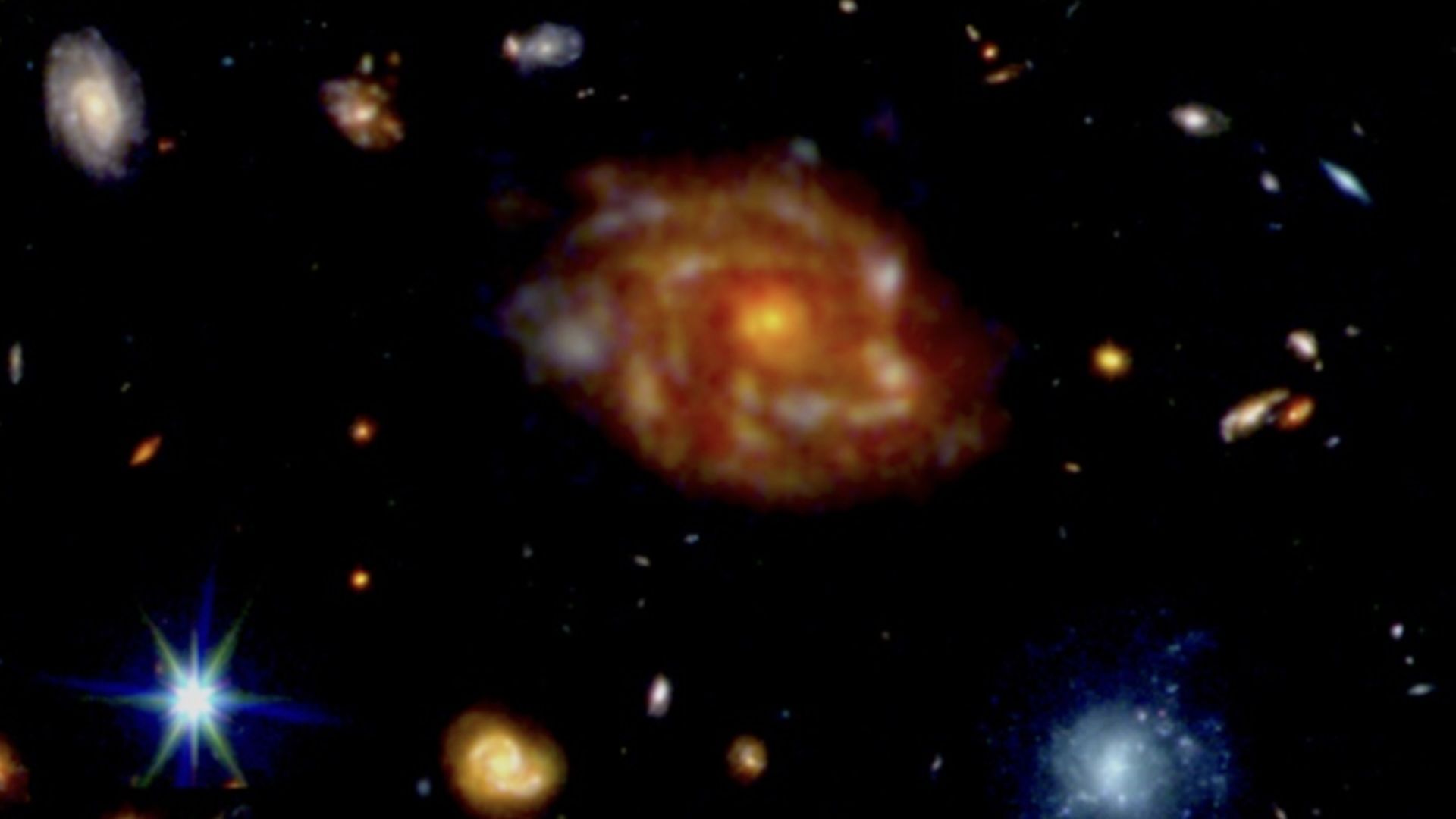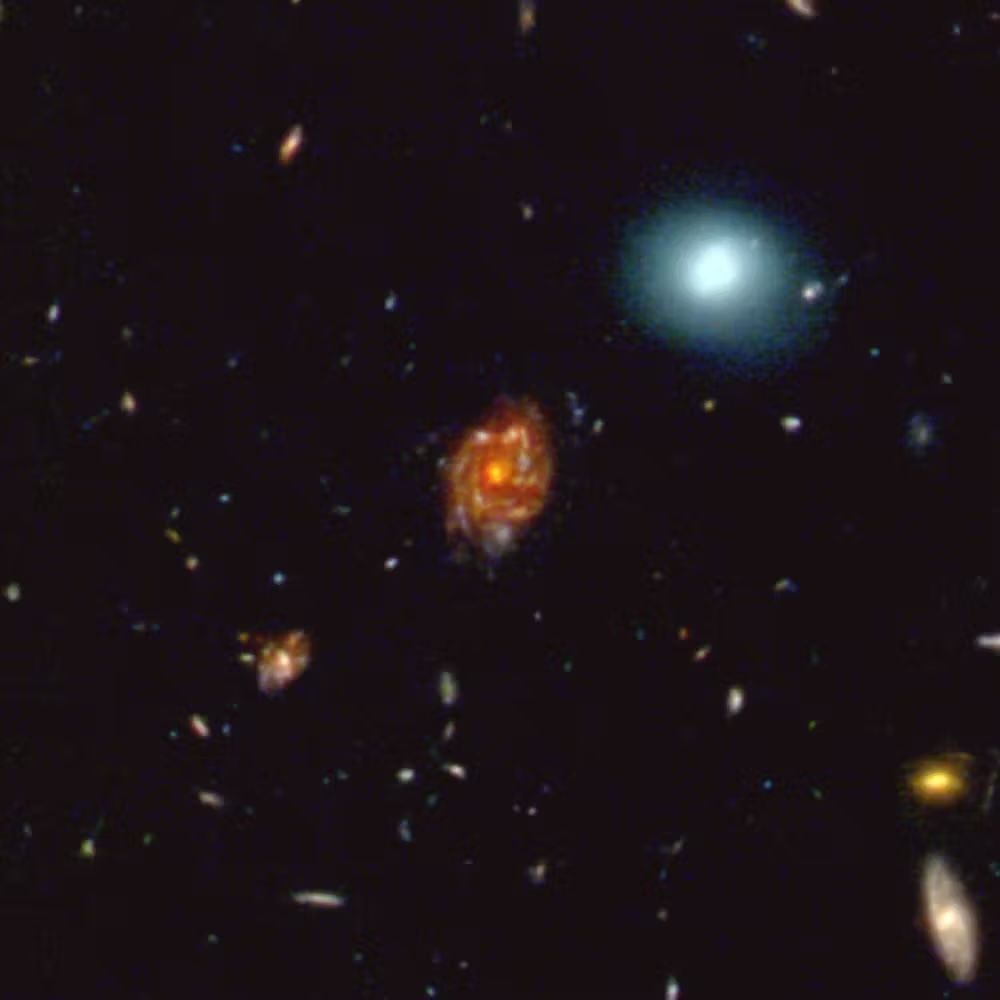Discovery of an improbable giant galaxy 🌀
Follow us on Google News (click on ☆)

The Big Wheel among its neighbors.
Credit: Weichen Wang et al. (2025), CC BY-NC-ND 4.0
The Big Wheel is a disk galaxy that already existed within the first two billion years after the Big Bang. Its size and well-defined spiral structure challenge current theories about galaxy formation.
Disk galaxies, like our Milky Way, are characterized by a flat, rotating structure composed of stars, gas, and dust. The discovery of the Big Wheel, with its distinct spiral arms, suggests that such structures can form and persist much earlier in the Universe's history than previously thought.
The Big Wheel is not only immense but also rapidly rotating, placing it among the most massive galaxies in the early Universe. Its discovery in a densely populated region of space suggests that the environment plays a crucial role in the rapid growth of galaxies.
This giant galaxy likely benefited from specific conditions, such as gentle mergers with other galaxies and an influx of gas aligned with its rotation, allowing its disk to grow undisturbed.

The Big Wheel galaxy at the center, with another closer galaxy at the top right.
Credit: JWST
The discovery of the Big Wheel was highly improbable, with less than a 2% chance according to current models. It opens new perspectives on understanding galaxy evolution and shows that the early Universe was capable of producing massive and complex structures much earlier than previously thought.
What is a disk galaxy?
A disk galaxy, like our Milky Way, is a flat, rotating cosmic structure composed mainly of stars, gas, and dust. These galaxies often exhibit spiral arms extending from a dense central core.
The rotation of these galaxies is a key element of their structure, influencing the distribution of stars and gas clouds. Disk galaxies are among the most studied in astronomy, as they provide clues about the formation and evolution of cosmic structures.
The discovery of the Big Wheel, a massive disk galaxy in the early Universe, suggests that such structures can form and persist much earlier than current models predict.
How do massive galaxies form?
The formation of massive galaxies is a process involving gas accretion and mergers with other galaxies. Traditionally, it was thought that these processes took billions of years.
However, the discovery of the Big Wheel, a massive galaxy in the early Universe, challenges this idea. This galaxy reached an impressive size and mass within just a few billion years after the Big Bang.
The specific conditions of its environment, such as a high density of galaxies and gentle mergers, likely played a crucial role in its rapid growth. This shows that the early Universe was capable of producing massive and structured structures much earlier than expected.